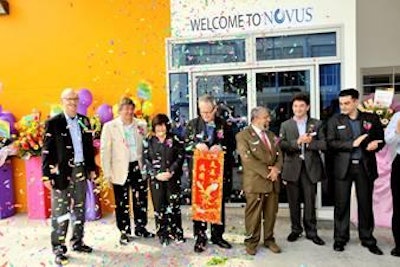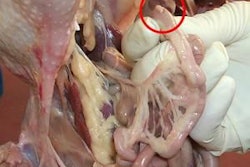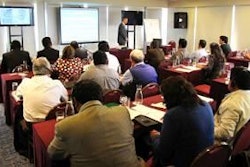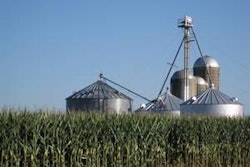
There is no doubt that Asia is where global growth in meat and feed production is headed. Keeping its focus on the region, Novus, on 16 January, opened the doors of its new blending facility in Singapore, built specifically to cater to the needs of the growing Asian market and its customers in the region, including Australia and New Zealand.
Pointing to the company’s mission statement to “feed the world affordable, wholesome food”, executive vice-president for marketing and sales Giovanni Gasperoni said: “We in animal nutrition need to double, even triple production to feed an estimated nine billion people in the world by 2050. Our customers in every part of the world have different needs and we have built this plant in Singapore to be closer to our customers in Asia.”
Covering an area of 4,000 square meters, the plant, which sits in the Tuas industrial area at the western end of Singapore, will be dedicated to producing feed supplements for Asia. Starting with its first product with Poultry TMO, other feed supplements to come out of this facility include Activate, Novus’ brand of gut modifiers combined with its methionine source, Alimet, and Cibenza, an enzyme blend for corn-soy diets of poultry feed.
A new start
Barely has production begun, the new Tuas facility is setting its sights on achieving a range of certifications and best practices for feed production. There’s FAMI-QS, the standard applied by European feed manufacturers, the industry standard HACCP, and ISO quality management.
“These quality systems are self-imposed because it reassures our customers of the quality of our product, and gains their confidence,” says Singapore plant manager, Leow Tong Hoe. Novus aims to meet these standards by the end of the first-quarter, he adds.
The adding and blending processes at the plant are entirely PLC (programmable logic controller) controlled, from the addition of raw material or liquid inputs, to weighing and packing. An ambient temperature of 25C and humidity levels kept at 45% are musts in Singapore, where daytime temperatures can easily exceed 30C on average, and humidity levels hover in the 70-80% range. This is to avoid the lumping of raw materials during mixing, and control moisture levels that could affect shelf-life and quality, shares Leow.
As mixing is fully automated on a PLC system, only two workers are required at any one time on site. Settings are programmed for each blend, reducing the need for human labour and the chance of human error. Using a paddle mixer design, each liquid mixer has a capacity of 1 metric tonne. Up to 20,000 kg, or 20 tonnes of feed supplements can be produced per shift. The plant operates three shifts a day on a five-day working week. Due to the high level of automation, the plant employs only six people.
Mixers are built from food-grade stainless steel, according to the company’s in-house specifications. Another in-house standard, comparable to that for international worker safety, is on particulate matter or dust control. A centralized dust collector keeps the working premises dust-free even in powder blend mixer rooms by effectively removing minute particle sizes of up to 10,000 particles per cubic meter. The admirably spic and span and visibly dust free working conditions are part of the high priority given to ensuring the safety and health of employees at Novus, says Leow.
Mixers are manually flushed and cleaned approximately once every two days, or whenever a change of product is required. Post-mixing, the blends are packed into 25 kg bags on a 3 tonne per hour capacity packing line using two-stage fillers with accuracies of up to 5 grams.
After checks confirm that target weights for each bag are met, the bags are then sealed and passed through a metal detector. “We are one of the first companies to use metal detectors in all our bags as we want to prevent animals choking on fine metal objects which may still be present in the feed,” says Leow.
Storage and logistics
Raw material supplies are kept in a warehouse outfitted with a high density double deep racking storage system. Plastic pallets rather than wooden ones are used as these meet the requirements of export markets such as South Korea and Japan.
In addition, pallets also have to fulfill the IPPC (International Plant Protection Centre) global standard, which mandates that pallets should be treated and kept free of infestation. Each rack is tagged with a location number to facilitate the first-in-first-out system of goods rotation. Up to 2,064 tonnes can be stored in a column of racks, reaching up to four pallets across in width.
Because much of what is produced at Tuas is bound for export, quality control and logistics are central to the plant’s operations. Distribution is monitored using a log-sheet and check-list that tracks the suppliers and raw materials used, on top of full supplier audits, fulfilling requirements for traceability.
Quality control checks are conducted using nationally accredited external laboratory service which must also compile with Novus’ in-house quality standards, shares Leow.















